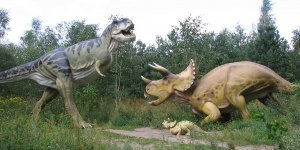Tech News

Unusual nanoparticles could benefit the quest to build a quantum computer. »

Researchers from the Universities of Granada and Cádiz have conducted a study to validate a new methodology that uses mobile phone signals (or those of other smart devices) in urban areas to track and analyse behavior in terms of inhabitants’ movement around the city. »

World population growth and lifestyle are the main causes of the increase in the volume of wastewater. As a result of the treatment of these waters, millions of tons of sewage sludge are generated, filling landfills and generating pollution, unpleasant odours, and public health risks. »

An international group of scientists, including from the University of Cambridge, have developed a graphene composite that can ‘eat’ common atmospheric pollutants, and could be used as a coating on pavements or buildings. »

Researchers have created better biosensor technology using a newly developed instrument that may lead to safe stem cell therapies for treating Alzheimer's and Parkinson's diseases and other neurological disorders. »

With a brief glance, facial recognition software can categorize gender with remarkable accuracy. But if that face belongs to a transgender person, such systems get it wrong more than one third of the time, according to new CU Boulder research. »

Science, News.
Researchers at Brigham Young University have developed a new breed of drones that can navigate without needing GPS. »

Rare disorders like Noonan syndrome often show up in people’s appearance that is recognizable with artificial intelligence. »

According to a new study, it may be possible to teach machines how to pick out features in neurons and other cells that have not been stained or undergone other damaging treatments. »

A strip of chromatography paper similar to that used in rapid pregnancy tests is the basis of a bio-sensor for detecting malaria that has been developed by Brazilian researchers. »

A portable 3-D scanning device developed by Sri Lankan and US researchers can quickly measure limb enlargement of patients with the disfiguring condition elephantiasis that resulted from lymphatic filariasis infection. »

U.S. electric car manufacturer Tesla is close to testing a long-haul self-driving electric truck that could drive in convoys following a lead vehicle. »

Inhaled nanoparticles can cross the lungs, entering the bloodstream, and accumulate in blood vessels and other bodily sites vulnerable to cardiovascular disease. »

Researchers at Carnegie Mellon University's Robotics Institute have enabled a computer to understand the body poses and movements of multiple people from video in real time -- including, for the first time, the pose of each individual's fingers. »

The next generation hypersonic space plane just took a big step toward reality as the Defense Advanced Research Projects Agency announced Boeing will “complete advanced design work” for the Experimental Spaceplane, XS-1. »

Heat is commonly regarded as computing's mortal enemy. Two researchers, however, developed a method to use heat as an alternative energy source. »

Inspired by insect wings that kill bacteria on contact, Indian researchers have developed a method to treat the surface of titanium orthopaedic implants at nano-scales so that they resist bacterial infection — a complication that often develops following surgery. »

Norway becomes the first country to start a complete switch-off of national FM radio stations. »

South Korean electronics giant Samsung says it will no longer manufacture its troubled Galaxy Note 7 smartphone after numerous reports around the globe of overheating. »
Nanoparticles designed to target white fat and convert it to calorie-burning brown fat slowed weight gain in obese mice without affecting food intake. »
"Disordered" materials are so-called because they are made up of objects that are in total disarray. Their composition, whether of atoms, molecules, grains or cells, do not lie in a neat, orderly pattern, but, instead, are all jumbled up. »


